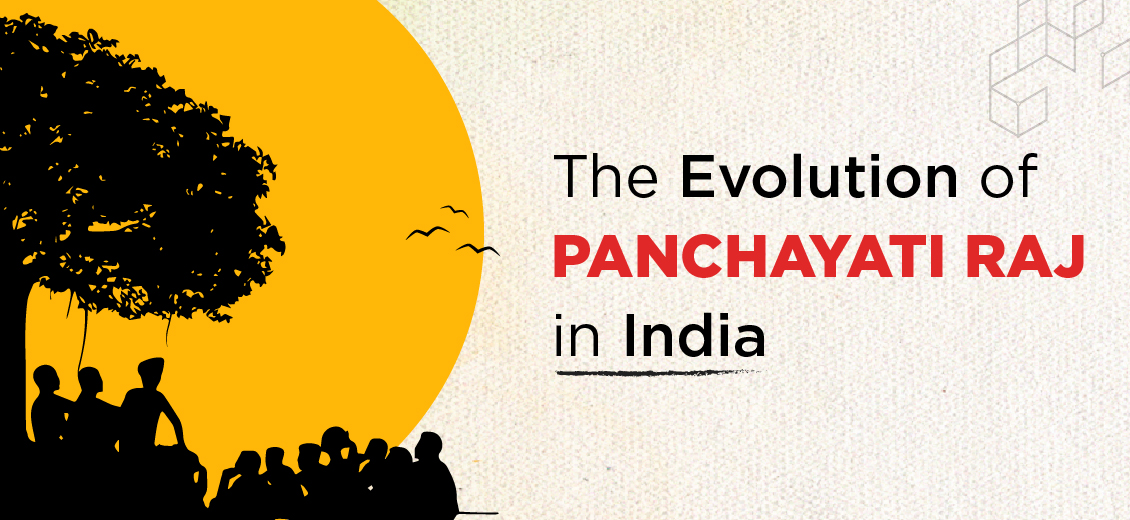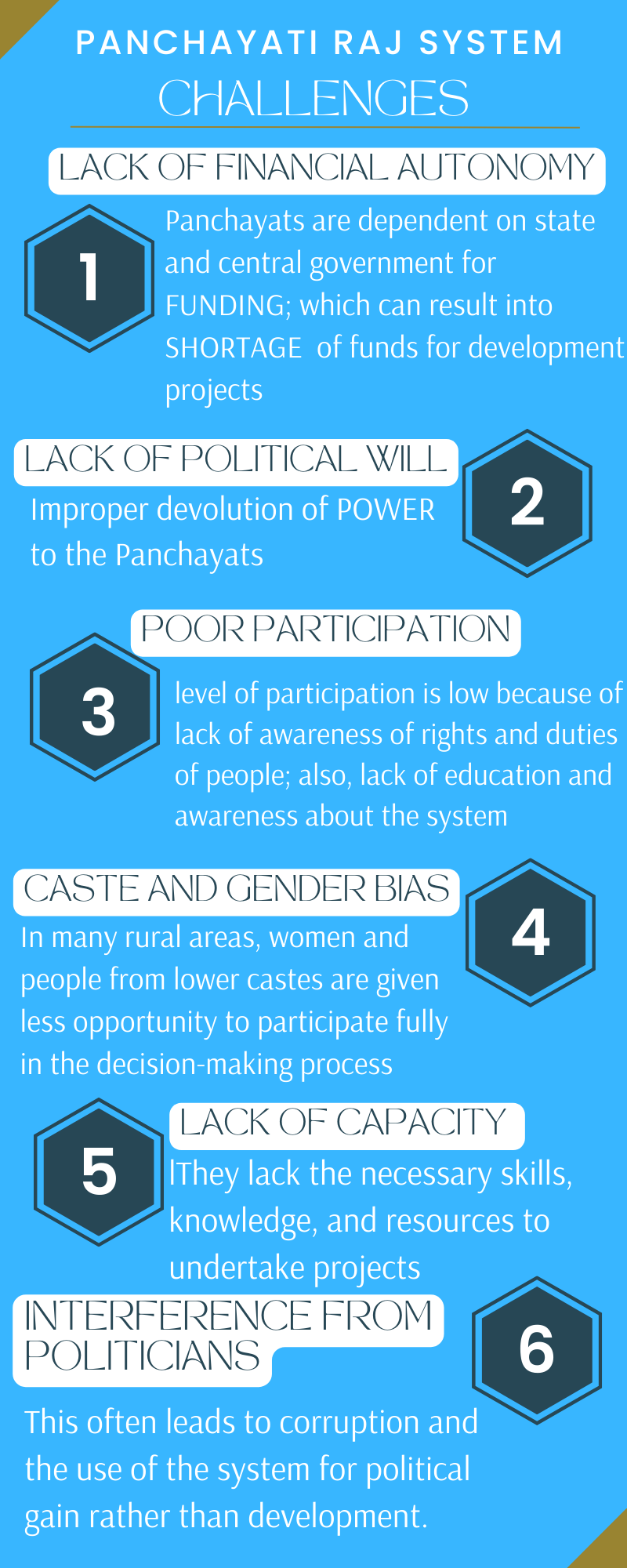The Evolution of Panchayati Raj in India
Blogs Home
- 24 Apr 2023

Panchayati Raj is a system of local governance in India that aims to promote democratic participation at the grassroot level. The term "Panchayati Raj" literally means "rule by five" and refers to a system of village councils that traditionally existed in rural India. As a matter of fact, the PRI was constitutionalized through the 73rd Constitutional Amendment Act, of 1992. As a result, the concept of the Panchayati Raj system can be looked at from various different perspectives.
Panchayati Raj system from a political perspective and socio-economic angle
According to Schedule 11 of the constitution, the Panchayati Raj system in India can be viewed as a tool for democratic decentralization and grassroots political participation.
It provides an opportunity for local communities to have a say in decision-making processes and to take ownership of their own development.
One of the key political benefits of the Panchayati Raj system is that by allowing people to elect their own representatives and participate in decision-making processes.
Another key socio-economic benefit of the Panchayati Raj system is that it helps to promote rural development. And that is by devolving power to the local level, the system enables local communities to take ownership of their own development needs and to work together to address them.
As a result, it provides access to basic services like healthcare, education, and sanitation, as well as promotes sustainable rural livelihoods.
Consequently, the political benefit of the Panchayati Raj system is that it can help to reduce corruption and improve accountability. By devolving power to the local level, the system can help prevent corruption and power abuse by higher-level officials.
Furthermore, the socioeconomic benefit of the Panchayati Raj system is that it can help to promote social justice. By giving marginalized communities a greater voice in decision-making processes, the system can help to address longstanding social and economic inequalities. This can help to promote greater social cohesion and inclusivity and to reduce social tensions and conflicts.
Lastly, the Panchayati Raj system can also help to promote social and political equality.
With this let us look at the power structure and the hierarchy of the Panchayati system
Organizational Structure
The Panchayati Raj system in India is a three-tiered system consisting of Gram Panchayats (village level), Panchayat Samitis (block level), and Zila Parishads (district level). The flowchart of the system can be represented as follows:
| LEVELS | Who elects whom? |
| Village Level |
|
| Block level |
|
| District level |
|
| LEVELS | DESIGNATIONS/RESPONSIBILITIES |
| Gram Panchayats |
|
| Panchayat Samiti |
|
| Zila Parishad |
|
Henceforth, there is devolution of power from higher levels of government to the local level which allows for greater participation and accountability at the grassroots level. So far, the modern Panchayati Raj system has undergone several stages of evolution.
Evolution of the Panchayati Raj System
The Panchayati Raj system in India has undergone several changes since its inception in the 1950s. The system has evolved over time with the introduction of new laws, amendments, and policies.
Here is a brief overview of the evolution of the Panchayati Raj system in India:
- Balwant Rai Mehta Committee (1957): The committee recommended the establishment of a three-tier Panchayati Raj system consisting of Gram Panchayats, Panchayat Samitis, and Zila Parishads.
- Ashok Mehta Committee (1977): The committee recommended the establishment of a two-tier Panchayati Raj system consisting of Gram Panchayats and Zila Parishads.
- Constitutional Amendment (73rd Amendment) Act, 1992: This amendment gave constitutional status to the Panchayati Raj system and added a new Part IX to the Constitution, which contains provisions relating to Panchayats. It provided for a three-tier system of Panchayats - Gram Panchayats, Panchayat Samitis, and Zila Parishads. It also provided for the reservation of seats for women and scheduled castes and tribes.
- Constitutional Amendment (74th Amendment) Act, 1992: This amendment provided for a similar system of local self-government for urban areas, known as Nagar Palikas or Municipalities.
- Amendments to the Panchayati Raj Act: Several amendments have been made to the Panchayati Raj Act, including the provision for the establishment of State Finance Commissions, which determine the allocation of resources to Panchayats.
This amendment mandated the establishment of three-tier Panchayati Raj institutions. This amendment also devolved several powers and functions to Panchayati Raj institutions, including local planning, social justice, and economic development.
Challenges
Conclusion
Some people view the Panchayati Raj system as a positive development. That has brought governance closer to the people and has empowered local communities to participate in decision-making processes. They believe that the system has helped to improve the delivery of basic services. Markedly, it has helped to promote social justice and create opportunities for economic empowerment at the grassroots level.
Nonetheless, some people are critical of the Panchayati Raj system. Pointing to challenges such as corruption, nepotism, and the domination of local elites in decision-making processes. They argue that the system has not been effective in addressing deep-rooted social and economic inequalities. And also, that there is a need for greater accountability and transparency in the functioning of the system.
Akai Negi
Akai Negi has done her Masters in Political Science after completing her graduation from DU. She has a keen interest in writing, blogging and journaling. When it comes to writing, she likes to do research and investigate topics of interest.
Blogs Home




